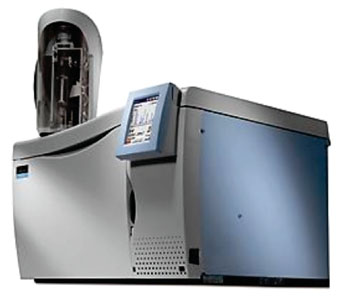Fecal Analyses Leads to Inflammatory Bowel Disease Diagnosis
By LabMedica International staff writers
Posted on 23 Feb 2016
The development of sophisticated analytical techniques has enabled the study and interpretation of changes in the fecal volatile organic metabolites and its correlation with the pathophysiological mechanisms in the gut during health and disease.Posted on 23 Feb 2016
The etiology of inflammatory bowel disease (IBD) remains poorly understood, but recent evidence suggests an important role of gut microbial dysbiosis (also called dysbacteriosis, a term for a microbial imbalance on or inside the body) in IBD, and this may be associated with changes in fecal volatile organic metabolites (VOMs).

Image: The Clarus 500 gas chromatography mass spectrometry (GC-MS) (Photo courtesy of PerkinElmer).
Gastroenterologists at the University Hospital Southampton (UK) and their colleagues obtained fecal samples from 117 people with Crohn's disease (CD), 100 with ulcerative colitis (UC), and 109 healthy controls. Fecal VOMs were extracted using solid-phase micro-extraction and analyzed by gas chromatography mass spectrometry. Data analysis was carried out using partial least squares-discriminate analysis (PLS-DA) to determine class membership based on distinct metabolomic profiles.
Fecal samples were submitted within six hours of bowel movement. A 2-gram aliquot was placed into 18-mL headspace vial (Supelco; Poole, UK). The VOMs were thermally desorbed by immediately transferring the fiber into the heated injection port (220 °C) of a Clarus 500 gas chromatography mass spectrometry (GC-MS, PerkinElmer; Beaconsfield, UK). The GC-MS generated a chromatogram with peaks representing individual compounds.
The scientists used the PLS-DA model to show clear separation of active CD from inactive disease and healthy controls. Heptanal, 1-octen-3-ol, 2-piperidinone and 6-methyl-2-heptanone were up-regulated in the active CD group [variable importance in projection (VIP) score 2.8, 2.7, 2.6 and 2.4, respectively], while methanethiol, 3-methyl-phenol, short-chain fatty acids and ester derivatives were found to be less abundant (VIP score of 3.5, 2.6, 1.5 and 1.2, respectively). The PLS-DA model also separated patients with small bowel CD from healthy controls and those with colonic CD from UC. In contrast, less distinct separation was observed between active UC, inactive UC and healthy controls.
The authors concluded that analysis of fecal volatile organic metabolites can provide an understanding of gut metabolomic changes in IBD. It has the potential to provide a noninvasive means of diagnosing IBD, and can differentiate between UC and CD. New studies indicates that analyses of vapors from fecal samples can identify volatile metabolites indicative of different types of inflammatory bowel disease, including Crohn's disease and ulcerative colitis. The study was published online on January 25, 2016, in the journal Alimentary Pharmacology & Therapeutics.
Related Links:
University Hospital Southampton
Supelco
PerkinElmer













